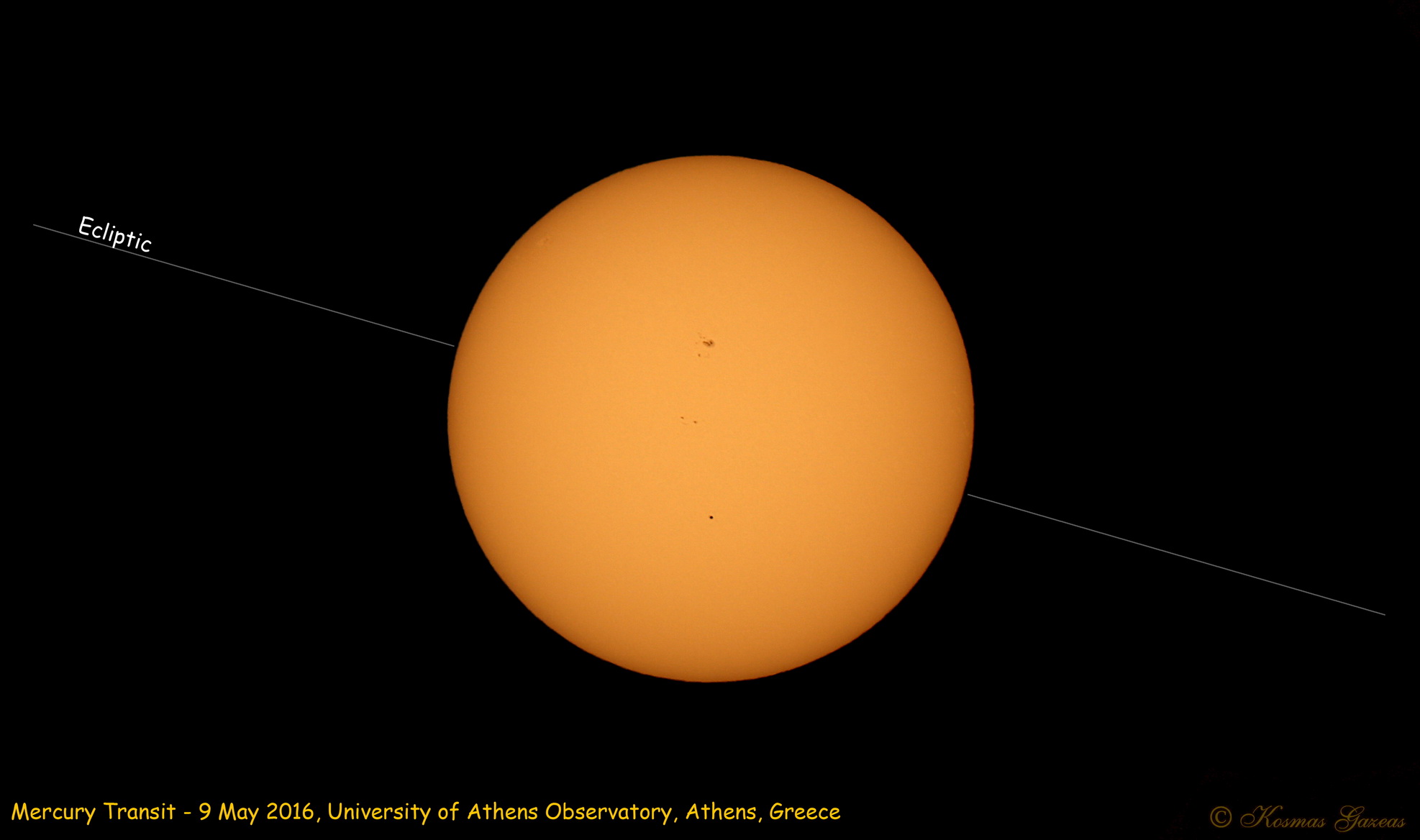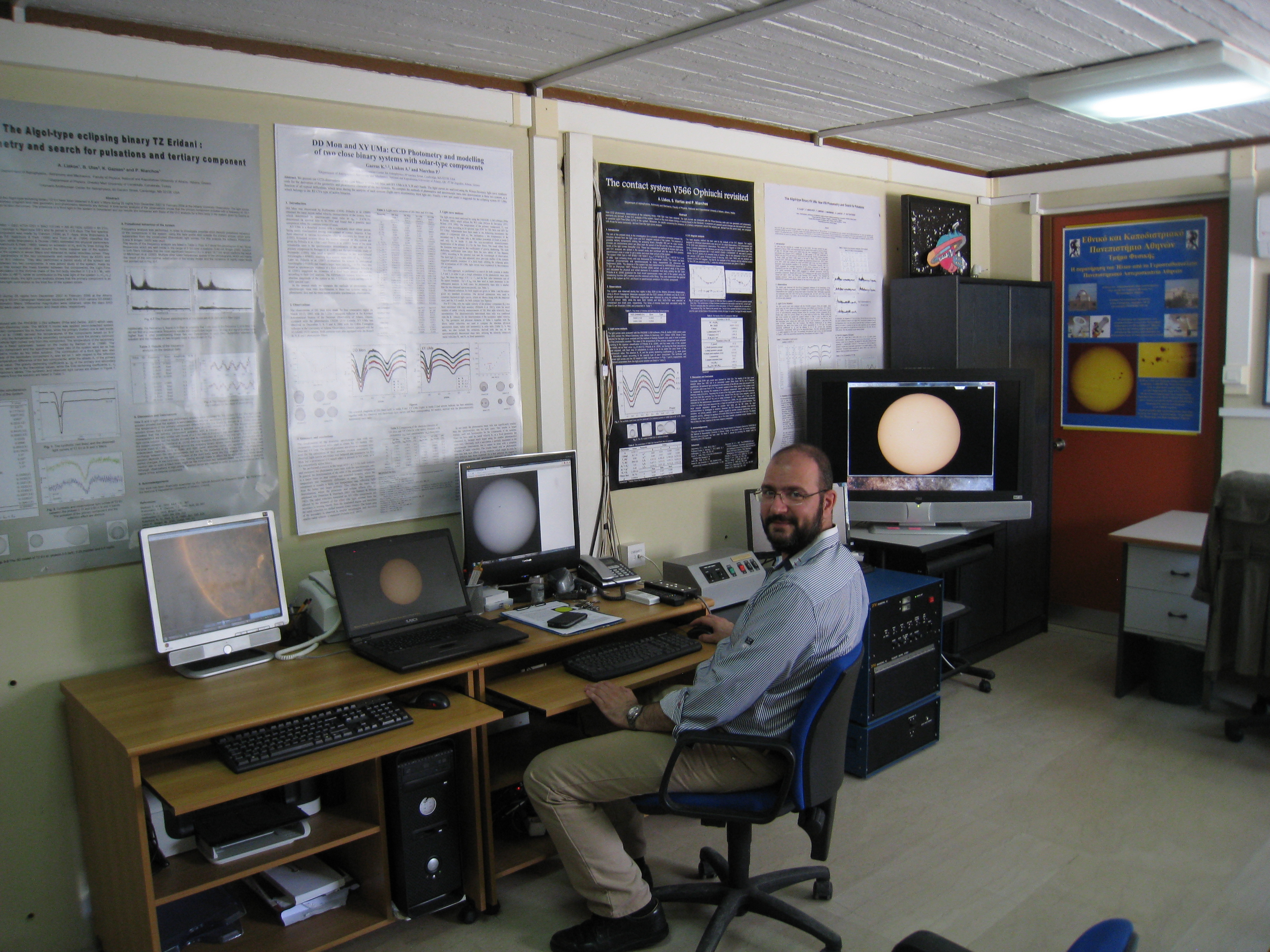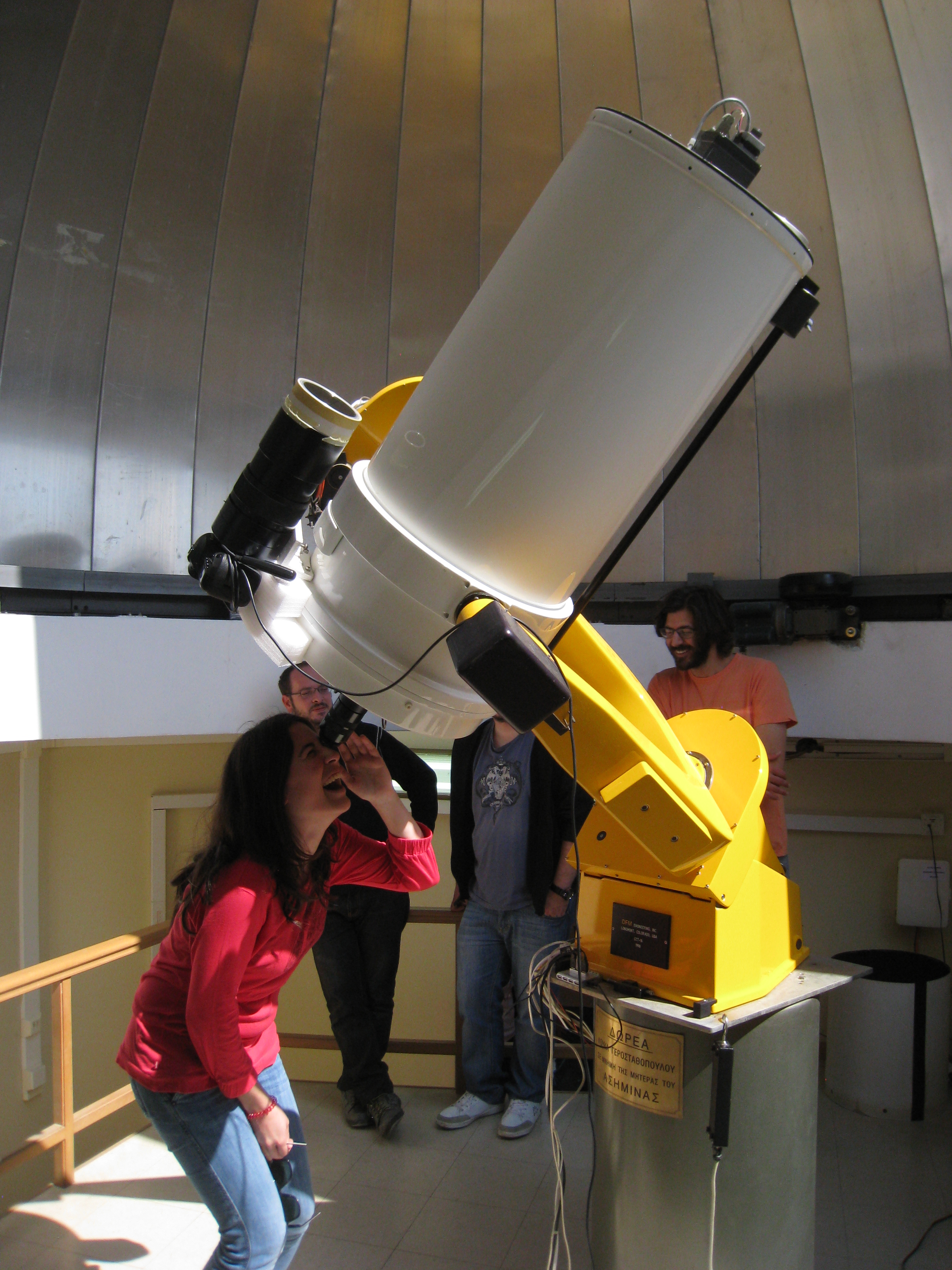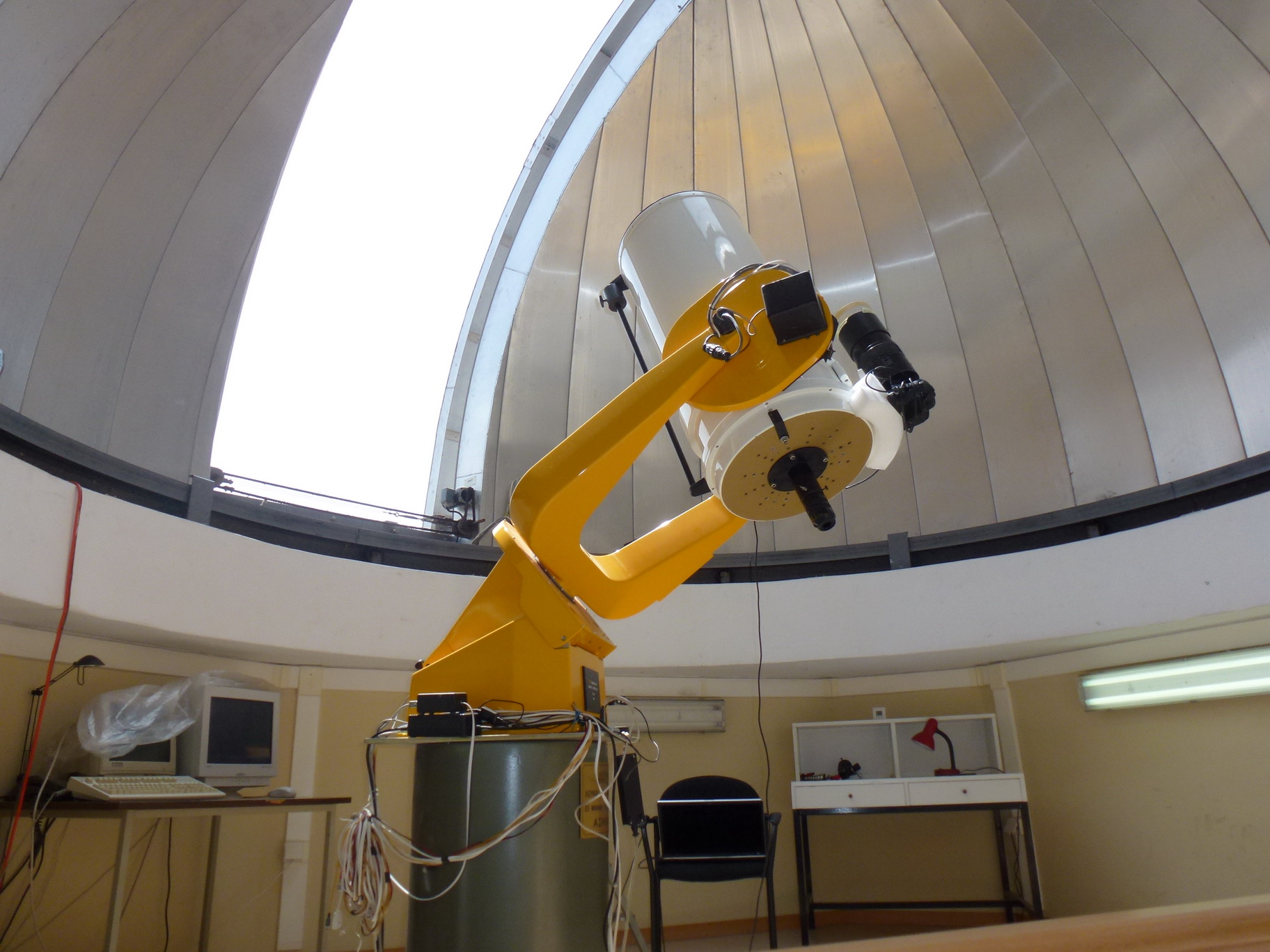Mercury Transit - 9 May 2016
Planetary transits infront of the solar disk are quite rare. In our Solar System only Mercury and Venus can be projected infront of the Sun, since their orbits are "inner", i.e. smaller than Earth's orbit. Mercury orbits around the Sun every 88 days. A combination of orbital period and inclination together with the relative distance to the Sun and Earth creates the perfect circumstances for a planetary transit 13-14 times in a century. The most recent ones were in 2003 (visible from Greece) and 2006 (invisible from Greece) and this one (2016). The next Mercury transits will occur in 2019 (partially visible from Greece) and in 2032 and hence one can conclude that planetary transits are a rare phenomenon.
The University of Athens Observatory organized on Monday 9 May 2016 a special observational event, with the occasion of the very rare Mercury Transit infront of the solar disk. The event took place at the Section of Astrophysics, Astronomy and Mechanics of the Department of Physics. The activities were planned and organized under the guidance and supervision of Kosmas Gazeas (Lecturer in Astrophysics), with the valuable contribution of undergraduate and graduate students. The event was a great success for the Department as several people visited and followed the organized events.
The events consisted of:
The evening ended with a tour at the telescope and dome, observation of the night sky and presentation of the telescope's operation. Some snapshots of the event follow below. The press release (only Greek version) of the event can be found here.



